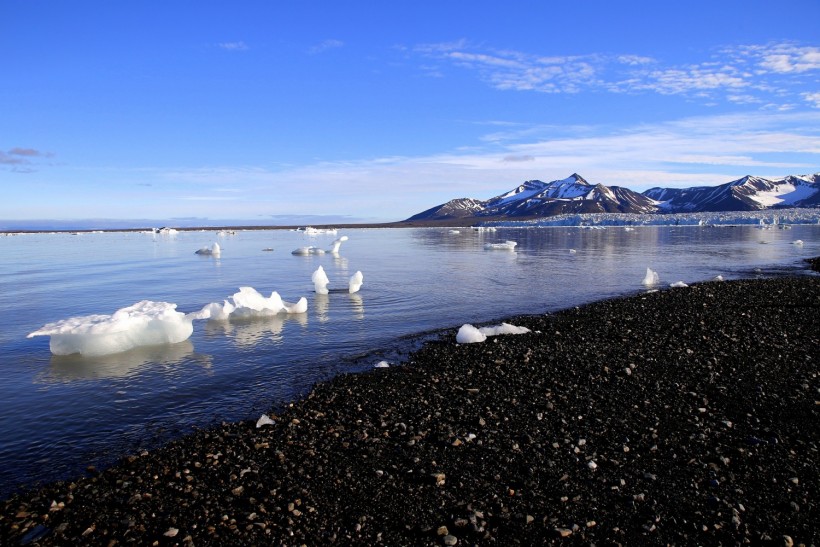A researcher working with NASA's Arctic Boreal Vulnerability Experiment (ABoVE) project investigates thermokarst lakes and how they are caused by and contribute to the Earth's changing climate. The Big Trail Lake in Alaska is the study's main focus.

Polar Arctic Cold Iceberg
Big Trail Lake
Big Trail Lake is a thermokarst lake formed due to permafrost thaw.
According to NASA, interior Alaska's permafrost contains massive wedges of actual ice trapped within the frozen ground. When the ice melts, the ground surface collapses, resulting in a sinkhole that can be filled with water. As a result, a thermokarst lake is formed.
According to Katey Walter Anthony, an ecologist at the University of Alaska-Fairbanks, lakes such as Big Trail are relatively new. They are young but significant because these lakes will shape the future.
The lake belches methane, which makes the lake appear to have bubbles.
What Happens When the Permafrost Layer Thaws Beneath the Lakes?
As the permafrost layer beneath lakes thaws, two things happen-pathways form in the permafrost, and microbial activity increases.
Microbes digest dead plants and other organic matter in previously frozen soil, producing carbon dioxide and methane. Permafrost thaw can form chimneys beneath lakes in some cases, allowing methane and other once trapped deep underground gases to escape.
According to Walter Anthony, the Big Trail Lake is like opening a freezer door for the first time and allowing microbes to decompose all of the food in your freezer. They emit methane gas as they decompose it.
When the lake freezes in the winter, the bubbles can prevent ice formation and create pockets of open water that emit methane throughout the season. In other places, the methane bubbles form ice domes on the lake's surface.
According to Franz Meyer, Chief Scientist at the Alaska Satellite Facility in Fairbanks, the rising methane bubbles will freeze into the ice once ice forms on these lakes.
Compared to smooth lakes, thermokarst lakes with high roughness or bubbles emit more methane.
Why Do New Lakes Emit More Methane Gas than Old Lakes?
According to Phys.org, the Arctic has millions of lakes, but only the newer ones emit significant amounts of methane. This is due to the fact that most Arctic lakes are hundreds or thousands of years old.
Those lakes used to be like Big Trail Lake, but the microbes there have since run out of permafrost organic matter to decompose, emitting methane from more modern carbon sources. This means that the older lakes are not emitting as much old methane.
ALSO READ: Melting Permafrost Could Mean Return of Ancient Diseases
The Danger of Methane Gas in the Atmosphere
Methane is a greenhouse gas that traps heat from the ground in the atmosphere rather than allowing the Earth to cool.
It is approximately 30 times more effective at trapping heat than CO2. However, it dissipates faster than CO2, which lingers in the atmosphere, according to the National Oceanic and Atmospheric Administration (NOAA).
NOAA Administrator Rick Spinrad stated methane also contributes to the formation of ground-level ozone, which causes approximately 500,000 premature deaths worldwide each year.
Reduced methane emissions are an essential tool we can use right now to mitigate the effects of climate change in the short term and slow the rate of warming.
RELATED ARTICLE: Melting Permafrost Opened Massive Sinkholes That Can Devour 6-Story Buildings in Arctic Seafloor
Check out more news and information on Space in Science Times.



![Earth's Quasi-Moon Kamo‘oalewa Could Originate From Lunar Surface Not Asteroid Belt [Study]](https://1721181113.rsc.cdn77.org/data/thumbs/full/53275/89/56/50/40/earths-quasi-moon-kamo-oalewa-could-originate-from-lunar-surface-not-asteroid-belt-study.png)










